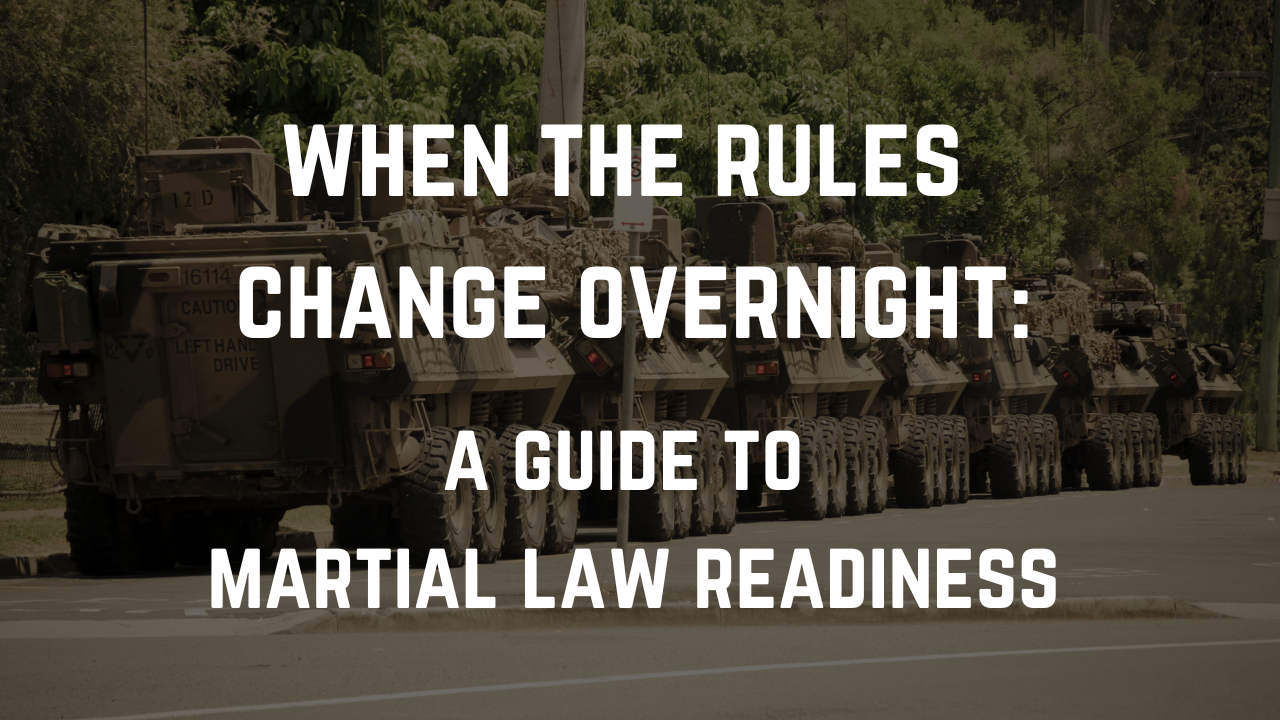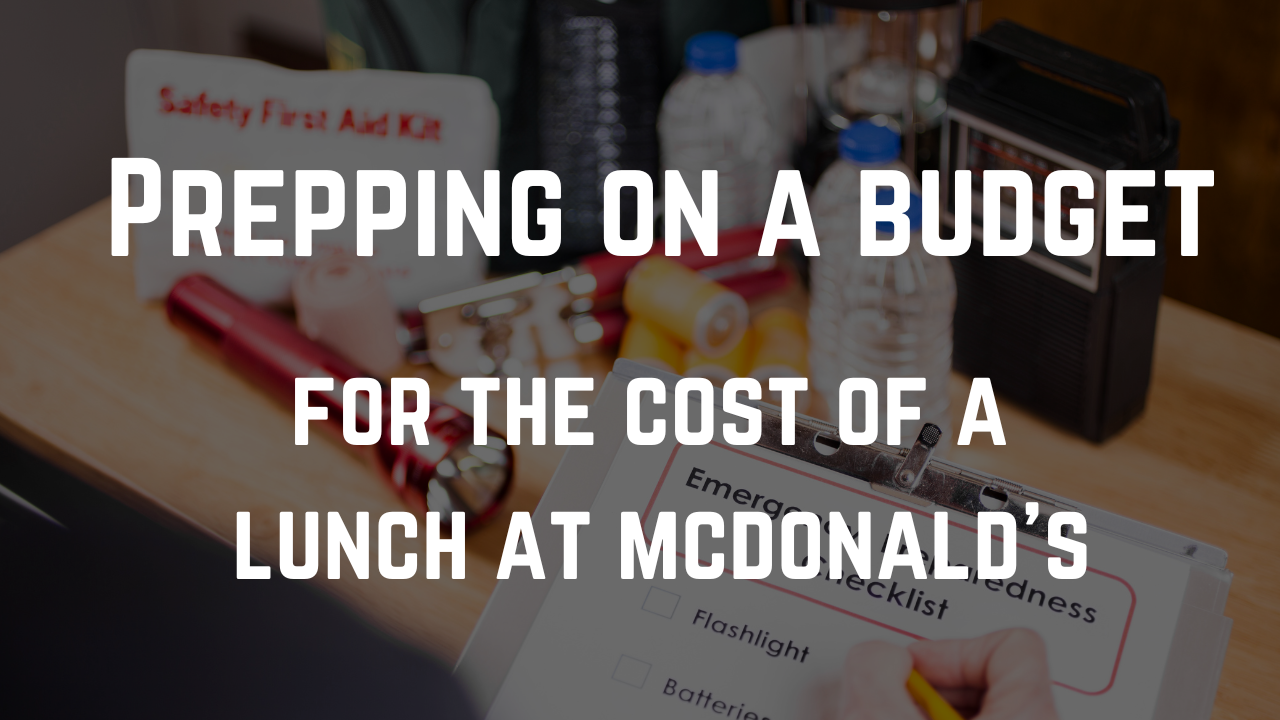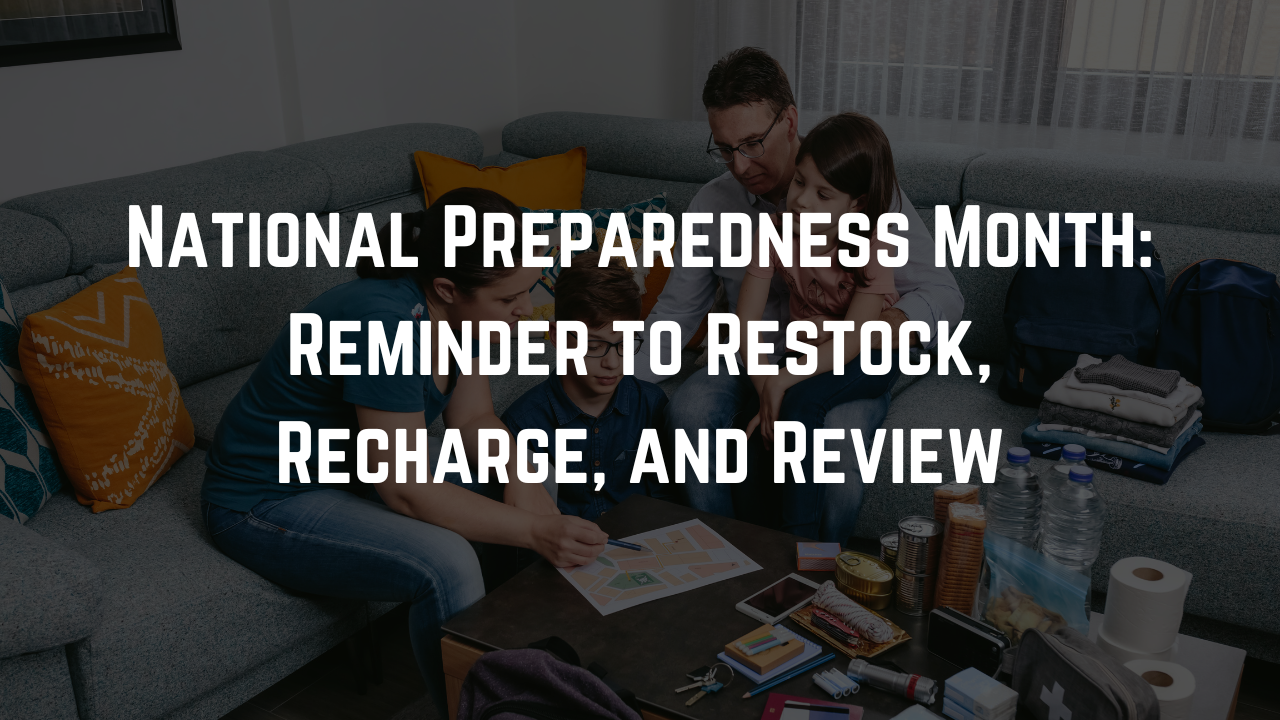
We’ve all seen the TV shows. Bunkers stocked with decades of canned goods. Basements transformed into apocalypse-ready fortresses. People who’ve invested tens of thousands of dollars preparing for scenarios that have a lower probability than getting struck by lightning, twice.
But here’s the thing: real preparedness isn’t about how many buckets of freeze-dried food you’ve squirreled away. It’s about developing the skills, mindset, and community connections that help you navigate life’s actual challenges – from power outages to job losses to natural disasters.
The Problem with Panic-Prepping
When fear drives preparation, the results are rarely practical. Panic-prepping typically follows a predictable pattern:
- A scary news headline or social media post triggers anxiety
- The person rushes to buy whatever items feel protective in the moment
- These purchases sit unused, often forgotten until the next panic cycle
- Skills remain undeveloped while false security grows
“I’ve got three months of food stored,” someone might proudly announce, but when asked about their knowledge of food preservation, cooking without electricity, or even basic first aid, they draw a blank. What happens when that food runs out? Or if they need to evacuate and can’t take it all?
Panic-prepping creates the illusion of readiness while actually leaving critical gaps in true resilience.
Skills: The True Currency of Preparedness
The most valuable preparedness assets can’t be ordered online or stored in a basement. They live in your mind and muscle memory.

Consider these scenarios:
- A week-long power outage hits during winter. Which is more valuable: another case of bottled water or knowing how to safely heat your home and prevent pipes from freezing?
- A cyber attack affects banking systems for several days. Is it better to have stockpiled cash or to have built community relationships where neighbors help each other through the disruption?
- A wildfire forces rapid evacuation. Would you rather have a bunker full of supplies you can’t take or the mental clarity to quickly identify what’s essential and the navigation skills to find safe routes out?
In each case, skills and knowledge trump stockpiles every time.
The Essential Skill Sets for Real Preparedness
True readiness isn’t about prepping for the end of the world—it’s about developing capabilities that serve you in everyday life while providing a foundation for handling larger disruptions. Here are the skill areas that matter most:
1. Basic First Aid and Health Management
Being able to address minor injuries, recognize serious medical issues, and provide emergency care until professional help arrives isn’t just for disasters—it’s useful throughout life. Include mental health awareness in this category; knowing how to manage anxiety during stressful situations is invaluable.
2. Resource Management
Learning to conserve and creatively use water, food, and energy teaches flexibility and resource awareness. This includes:
- Basic plumbing fixes to address leaks
- Food preservation techniques
- Energy conservation habits
- Creative reuse of materials
Our guides on water resources and food preparation provide practical starting points.
3. Situational Awareness and Decision-Making
The ability to:
- Assess your environment for both opportunities and threats
- Make decisions with incomplete information
- Adapt plans as circumstances change
- Stay calm under pressure
These cognitive skills are applicable in everything from navigating a career change to handling a sudden storm.
4. Communication and Community Building
No matter the scenario, humans fare better together than alone. Developing the ability to:
- Clearly communicate needs and offers of help
- Build and maintain community connections
- Resolve conflicts constructively
- Organize group efforts efficiently
These skills make daily life better while creating resilience against larger disruptions.
5. Technical Know-How
Basic understanding of how systems work (from your home’s electrical setup to car maintenance to communication technologies) creates both self-reliance and problem-solving capability. You don’t need to be an expert in everything, but foundational knowledge prevents helplessness when systems falter.
Building a Practical Readiness Mindset
Skill development isn’t a one-time effort but an ongoing process.

Start With Your Actual Life, Not Hypothetical Disasters
Look at disruptions you’ve already experienced:
- Power outages
- Weather events
- Financial setbacks
- Health challenges
What would have made those situations easier? Those are your priority skills and preparations.
Make Learning Gradual and Enjoyable
Rather than cramming survival skills in a weekend, integrate learning into regular life:
- Take a first aid course with friends
- Learn to cook a new meal without electricity once a month
- Practice navigation on weekend hikes
- Start a small garden with easy vegetables
Focus on Transferable Skills
The most valuable preparedness skills serve multiple purposes and scenarios. For example, learning to repair clothing by hand:
- Saves money
- Reduces waste
- Provides a calming hobby
- Creates resilience against supply chain disruptions
- Offers a valuable community service
Documentation Matters
Keep simple, accessible records of:
- Important contacts
- Medical information
- Home systems (where shutoffs are located, etc.)
- Basic procedures for household maintenance
These records help not just in emergencies but in daily life—and they’re especially valuable if someone else needs to step in during your absence.
The Reality of Resilience: It’s Social, Not Solo
Perhaps the biggest myth in prepper culture is the “lone wolf” fantasy—the idea that individual preparation is sufficient for long-term resilience. History and research consistently show that communities survive challenges better than isolated individuals.

True readiness involves:
Building Skills That Benefit Others
When you develop capabilities that help your community—whether that’s first aid knowledge, repair skills, or food production—you become an asset rather than just another person in need during difficult times.
Creating Reciprocal Relationships
Strong communities function on reciprocity—the understanding that everyone contributes what they can and receives help when needed. This isn’t just about emergencies; it’s about creating a supportive daily life that naturally extends into crisis response.
Practicing Collaborative Problem-Solving
Regular community activities, from neighborhood cleanups to skill shares, build the social infrastructure that enables effective response during disruptions. The community that already knows how to work together adapts more quickly to challenges.
Preparation isn’t about fearfully anticipating catastrophe, it’s about confidently building capacity to handle whatever comes your way.
Getting Started: From Panic to Practice
If you’ve been caught in the cycle of panic-prepping or feel overwhelmed by disaster scenarios, here’s how to shift toward practical readiness:
- Assess realistically. What disruptions are actually likely in your area? Focus on those first.
- Inventory your skills. What can you already do that would be useful during a disruption? What skills do you want to develop?
- Start with dual-purpose preparations. Prioritize items and skills that improve your daily life while building resilience.
- Connect locally. Get to know neighbors, join community organizations, or start a small skill-sharing group.
- Practice regularly. Use everyday minor inconveniences as opportunities to practice adaptability.
For those living in apartments, dorms, or condos, don’t feel excluded from practical readiness—we have specific resources for your living situation at our dwelling types section.
The Bottom Line: Empowerment, Not Fear
The difference between panic-prepping and practical readiness comes down to this: one is driven by fear, the other by empowerment.
Panic-prepping asks: “What terrible things might happen and how can I barricade against them?”
Practical readiness asks: “How can I develop the skills, resources, and relationships that make me resilient regardless of what happens?”
The first approach leads to anxiety, isolation, and fragility disguised as strength. The second builds confidence, connection, and genuine adaptability.
At Ready for Unsteady, we believe in preparation without paranoia, readiness without fear. Whether you’re just starting your preparedness journey or looking to shift from stockpiling to skill-building, remember that the most valuable resources aren’t in your pantry or garage – they’re in your mind, your hands, and your community.
Ready to get started? Begin your practical readiness journey at our Start Here page.
Because life is unsteady—but you don’t have to be.


